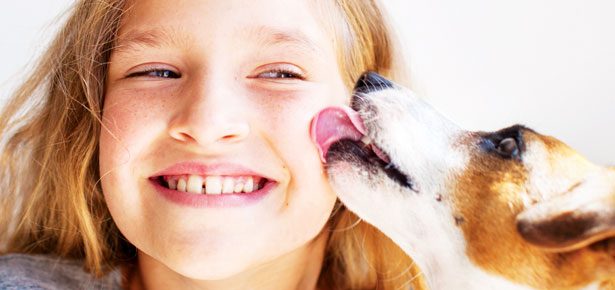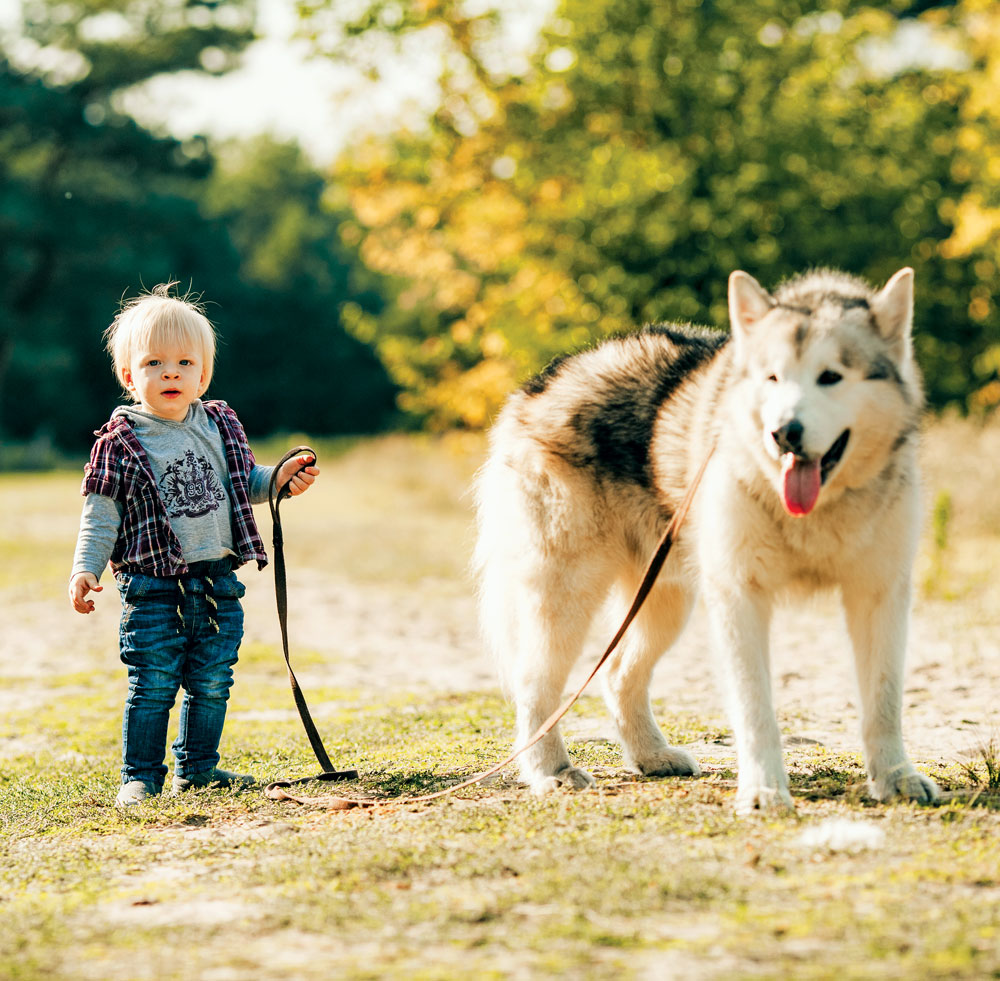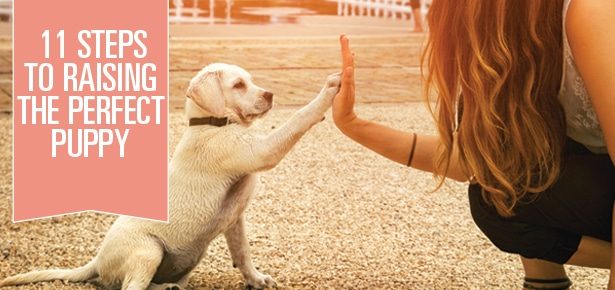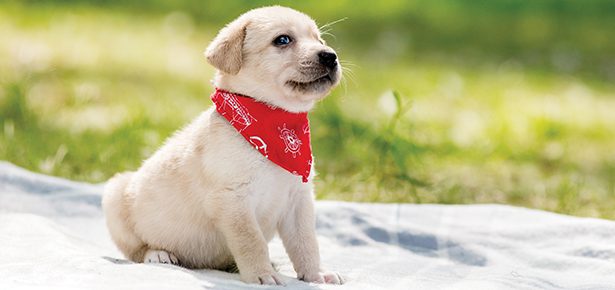

Kids and Dogs
What to Teach Kids and What to Teach Dogs So Everyone Gets Along
Q: Kids and Dogs! My family will soon be adopting a year-old, medium-sized marvelous mutt from the shelter. We have a seven-year-old daughter and a five-year-old son. What should we teach the kids to ensure that we will become one big happy family with our new dog?
A: I’m so glad you’re asking this question so your kids and dog love each! Let’s get everyone off on the right foot. First, although your kids will naturally be anxious to pet and play with the new family member, there’s a right way and many wrong ways to do that. Little girls in particular often want to hug dogs. To humans, hugs signify affection. To dogs, however, they are a form of restraint; just ask any vet tech how well dogs like that! It’s true that a small percentage of dogs actually enjoy being hugged, but many more simply tolerate it. Others not only won’t tolerate it, but will snap or bite to show their displeasure. Teach your kids, along with any visiting children, not to hug the dog, but to pet him properly instead; we’ll get to specifics in a moment. As for boys, many love to wrestle with dogs. And why not? It’s fun! Unfortunately, it’s all too easy for a child to get hurt, since classic canine wrestling maneuvers include using the mouth. As excitement builds, teeth tend to contact little fingers and limbs, and pretty soon you have a crying child and a dog who is being punished for doing what dogs naturally do.
Speaking of games, one things dogs love is jumping on kids, especially when it results in the child waving their arms around and making high-pitched sounds. It’s even more fun when the child runs away! The dog gives chase and may nip as well, resulting in a not-so-happy child. Teach your kids that if the dog jumps, to stand still, fold their arms, and look up and off to the side. Little girls in particular really seem to love this drama-queen pose! The dog should quickly lose interest and move on to something more exciting. But if he persists, step in and redirect him to another activity. Teaching your dog to sit as an alternative to jumping is also helpful. Your dog should learn that if he wants attention, sitting is the way to get it, and your kids should be taught how to ask for the sit, including using hand signals to do so.
Now let’s talk what your kids and everyone else should know about how to pet—and how not to pet—your dog. Never approach a dog with your hand palm down over the dog’s head. An overhead approach, whether a hand coming down or a face bending to kiss the top of the head, can be frightening to dogs and can result in a nip or a full-on bite. Instead, teach your kids to begin with long, gentle strokes on your dog’s chest and, as long as the dog is accepting of it, move on to other parts of the body, avoiding the paws and tail. Have your kids practice on a stuffed animal before you even bring the real dog home. Keep in mind, however, that despite all of your excellent instructions, even if your kids are generally compliant and responsible, mistakes do happen.
The Best Breeds for Kids & Families
Gina DiNardo, American Kennel Club Executive Secretary and expert on all things breed related, shares which breeds are best for littles and families.
A breed described as “merry” by its fanciers, Beagles are loving, happy, and companionable—all qualities that make them excellent family dogs.
Boxers have a history of working alongside humans, so they thrive on interaction and are patient, protective, and playful. If you have young children, teach them to properly interact with larger dogs so that they don’t get unintentionally knocked over.
Golden Retrievers are easy to train and easier to love. They are frequently used as service dogs and thrive on outdoor play.
Labrador Retrievers are loyal, have great temperaments, are easily adaptable, and have good energy levels.
Despite their size, the Newfoundland is famously good with kids. Their sweet temperament is their most important characteristic.
Leonbergers have a gentle nature and serene patience. They relish the companionship of the whole family.
Image: stasia04/bigstock.com
So, create a safeguard by desensitizing your dog to the things kids may do, such as pulling ears and tails, rough petting, and so on. You—not your kids—can, for example, tug your dog’s ear gently and then feed a treat in order to get him used to this handling. Repeat, eventually tugging a bit harder.
The same goes for other things kids are apt to do. Monitor your dog’s body language to be sure he seems happy with the “game,” stopping immediately if he does not. If necessary, go more slowly or gently the next time. Build gradually to the point where your dog has a positive association with the things your kids or visiting kids might do.
House rules should include never bothering the dog when he’s eating, and not taking his toys or chew bones away. Some dogs come complete with resource guarding issues that need to be addressed, but even if yours doesn’t, it’s all too easy to create one if a dog feels threatened. Another time to leave the dog alone is when he’s sleeping. Some dogs become startled when awakened and may snap. Letting your dog have his space and allowing him to decide whether he wants interaction is very important. When your dog is in his crate, for example, it should be considered his safe spot, and kids should not approach. The same goes for any time your dog is behind or under furniture, or in a corner. Even the nicest of dogs might bite if he feels sufficiently threatened or cornered. Teach your kids that any time the dog wants to walk away, to let him. You should also share the basics of canine body language. This is a topic I wish was taught in every school, as it would avert countless bites. You need to read this, an illustrated guide on how to read a dog’s body postures.
Explain that if the dog growls, your kids should stop whatever they’re doing at the time and back away slowly, then call for you. Explain that a growl doesn’t mean the dog is bad, but that it’s his way of saying that he’s not happy. Of course, you will need to figure out what the underlying issue is and address it, with the help of a professional if necessary. Teach your kids too that if they catch the dog doing something wrong, such as putting paws up on the kitchen counter, to come find you right away. Kids mimic their parents, and if they’ve seen you push the dog down and reprimand him, they might try to do the same. Make it a game by telling them they’re the house police, or spies, or whatever would appeal to them, but the idea is for them to watch the dog and report any bad behaviours to you immediately rather than taking matters into their own hands.
This all might sound like a lot, but it’s really not. Having simple ground rules in place will go a long way toward making sure that your dog integrates smoothly into your family, and that everyone stays safe and happy.
———
Nicole Wilde is the award-winning author of 11 books on canine behaviour. You can find her books, seminar DVDs & blog at nicolewilde.com.
Join the newsletter and never miss out on dog content again!
"*" indicates required fields
By clicking the arrow, you agree to our web Terms of Use and Privacy & Cookie Policy. Easy unsubscribe links are provided in every email.






